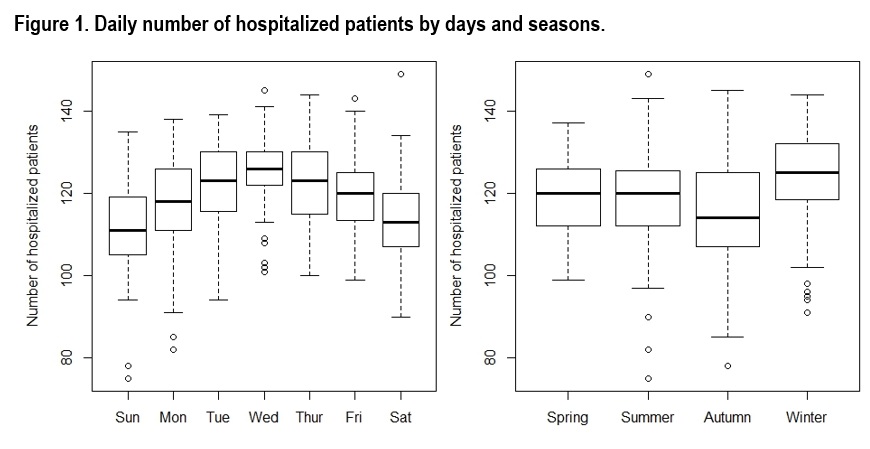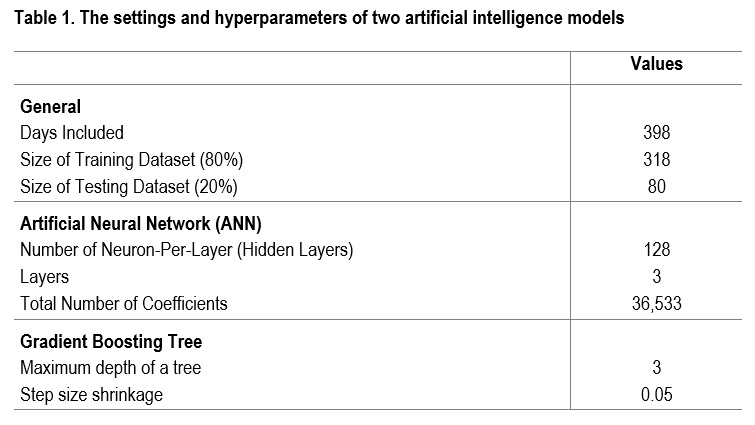Background: The number of hospitalized patients varies significantly throughout the year. Fine prediction of the number of hospitalized patients is essential to provide adequate staffing and quality care. We aimed to identify the factors affecting the number of hospitalized patients and develop a prediction model.
Methods: Daily number of hospitalized patients on the medical floor was collected from October 2017 to November 2018 at the community hospital in Clinton, Maryland. This was compared with local climatological data obtained from the national database and calendar information including season, days of the week, and holiday. Univariable linear regression was performed for continuous variables. For categorical variables, student t-test and ANOVA analysis were performed. Multivariable regression analysis was performed with the factors significantly associated with the number of patients in the univariable analysis. Machine learning (ML) model was designed with 3 layered-neural networks and gradient tree boosting for individualized prediction.
Results: The weather and the patient census data were collected for a total of 398 days. Mean of 126.8, maximum of 149.0 and minimum of 75 patients were seen hospitalized per day during this period. The average number of hospitalized patients were 9.0 lower on weekends than on weekdays (95% CI 6.6-11.4, p<0.001). 2.9 fewer patients were hospitalized on rainy days. (95% CI 0.6-5.2, p=0.01). On multivariable analysis, the difference of average temperature to a normal temperature of the year and Wednesday were positively associated with the number of patients (p <0.001). Saturday and Sunday were negatively associated with the number of patients (p<0.01). ML model without climate data (Cminus) predicted daily census with root mean square error (RMSE) of 11.23. The performance improved when the climate data applied (Cplus) with RMSE of 10.68.
Conclusions: Our study shows that the number of hospitalized patients is associated with climate and calendar information. Machine learning can constitute a powerful tool to predict the number of hospitalized patients using climate and calendar information. Performance of ML model improved when the model was provided with climate data.


